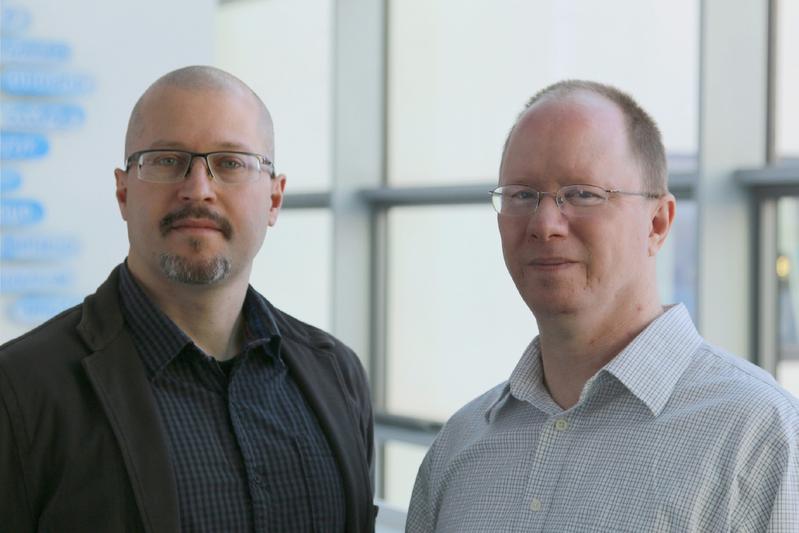

PD Dr. Andreas Androutsellis-Theotokis, PhD (left), and Dr. Steven W. Poser (right) are stem cell researchers at the Carl Gustav Carus University Hospital in Dresden.
Dresden University Medicine / Konrad Kästner
Neural stem cells possess extraordinary abilities: They can multiply, fall into a sort of hibernation (“quiescence”) or differentiate into mature cell types with a very wide variety of functions. But how do neural stem cells manage to be so flexible?
All cells possess signal pathways, which they use to sense their immediate environment and react to it. What is decisive is how each cell type interprets the signals it receives. It is a bit like people who may speak the same language but interpret some words differently, as they are using different dialects.
The scientists must then decode how stem cells interpret the different signals from their environment – or which “dialect” they understand – and whether you can use this specifically to talk cells into regenerating damaged tissue.
PD Dr. Andreas Androutsellis Theotokis, PhD, Dr. Jimmy Masjkur and Dr. Steven W. Poser are stem cell researchers in the Department of Medicine and the Third Outpatient Clinic at Dresden University Hospital, directed by Professor Stefan R. Bornstein MD. They have now discovered such a molecular “dialect”, which they call the STAT3-Ser/Hes3 signaling axis. What makes this so fascinating is that this signaling axis is not only used by stem cells, but also by some other cells that are also capable of multiplying and differentiating into other cell types.
These include the pancreatic islet cells, which produce various endocrine hormones, including insulin. The pancreas is a highly plastic organ and can undergo complex changes during homeostasis (equilibrium) and regeneration.
The insight that islet cells use the same signal pathways as stem cells that can contribute to regeneration could lead to new approaches to the therapy of diabetes. This is because maintaining and regenerating islet cells is important in diabetes research.
Thus, stem cell research has increased our understanding of the signal pathways needed for regeneration. The signal pathways in neural stem cells can serve as a “blueprint” in identifying new molecular mechanisms in the biology of the pancreas.
The result of this project was recently published in Diabetes, titled: Endocrine Pancreas Development and Regeneration: Noncanonical Ideas From Neural Stem Cell Biology (DOI: 10.2337/db15-1099).
Contact:
Universitätsklinikum Carl Gustav Carus Dresden
Technische Universität Dresden
Medizinische Klinik und Poliklinik III
PD. Dr. Andreas Androutsellis-Theotokis, PhD
Tel.: +49 0351 796 5690
Fax: +49 0351 458 6398
E-Mail: andreas.theotokis@uniklinkum-dresden.de
http://www.uniklinikum-dresden.de/mk3
http://diabetes.diabetesjournals.org/content/65/2/314.abstract












